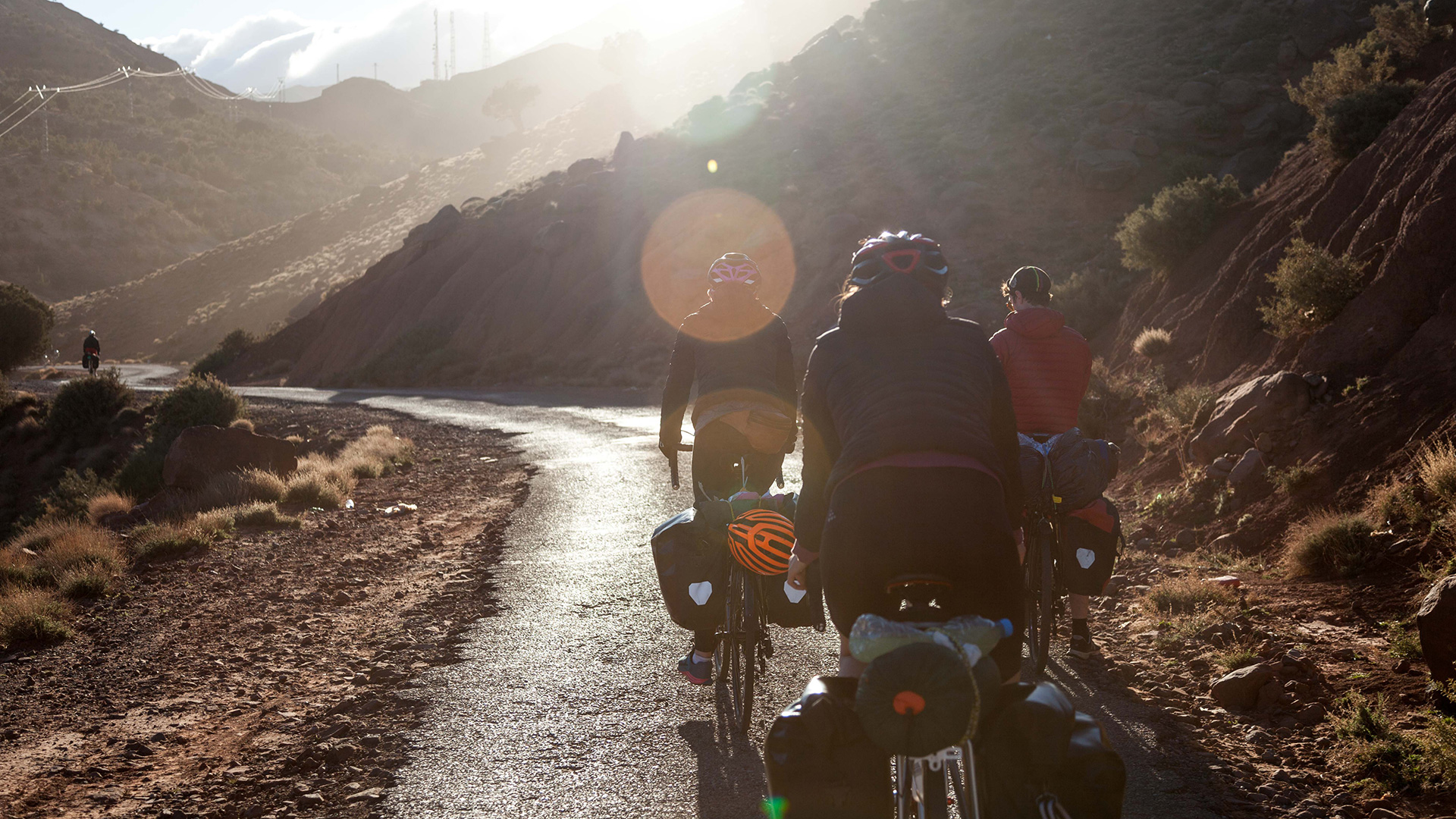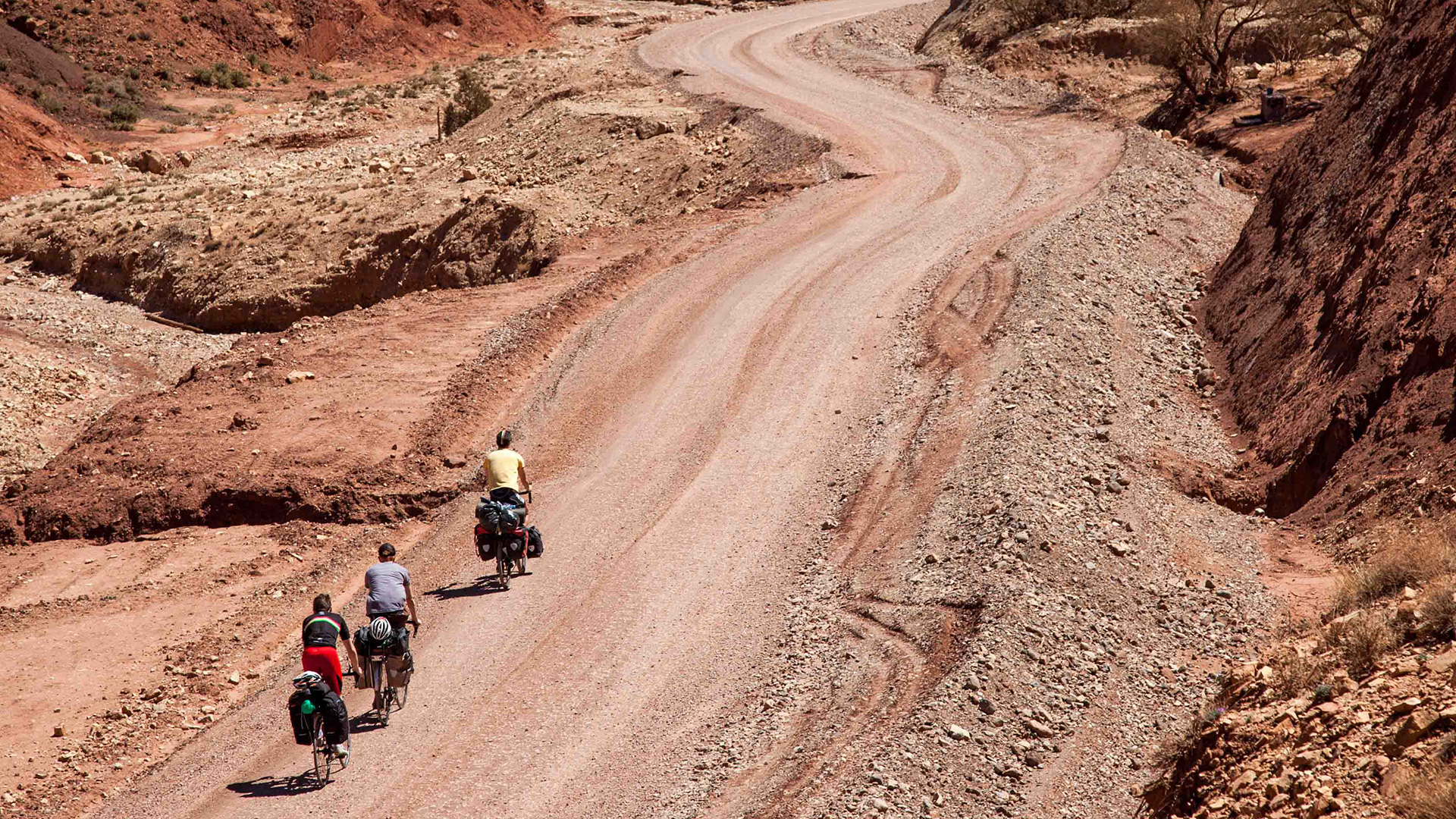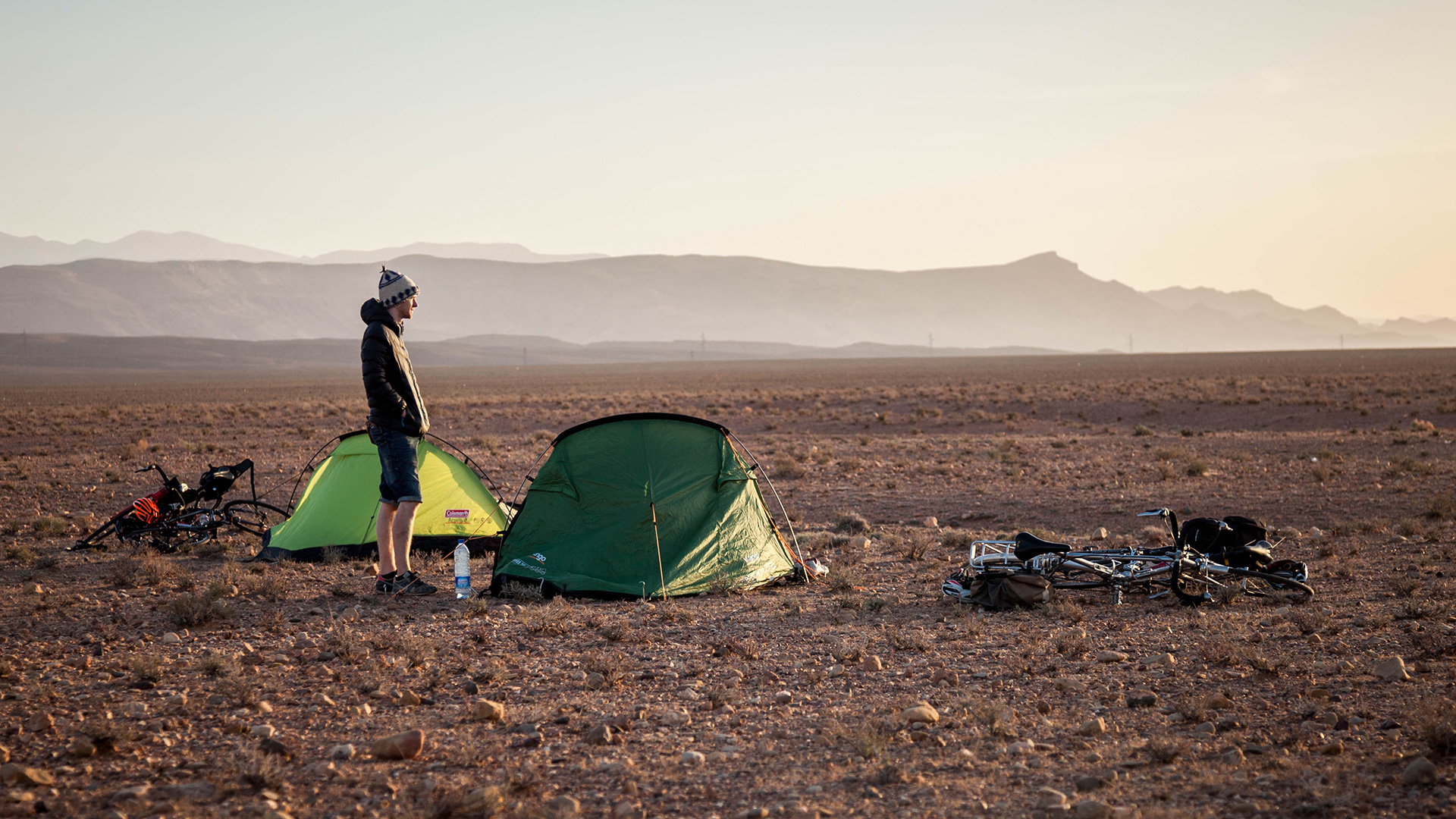

Encompassing everything from overnighters on roads and trails close to home, to multi-day adventures and cross-continental epics, self-supported cycle touring presents an adaptable – and infectious – experience for adventure-seeking travellers and outdoor enthusiasts.
The wonderful thing about cycle touring is that you don’t even need to be a cyclist to enjoy it. While the cycling itself is laced with thrill and fulfilment, from testing climbs to speedy descents, it is everything that cycle touring facilitates which make it so captivating: the people you meet, the landscapes you travel through, the end-of-day camp routine, and the satisfaction of human-powered adventure.
All you need to begin is a bike (head to our guides to the best mountain bike or the best cheap mountain bike for more on this), some basic gear, and an open mind. We’ll cover all of the basics here, and encourage you to utilise whatever gear you already own – just chuck it in a bag, attach it to your bike, and get out there.
- • Uphill cycling tips from 'Everesting' world record holder
What kind of bike and setup do I need for cycle touring?
The good news is that cycle touring can be enjoyed on any bike, so always try to use what you already own. All bikes are very adaptable, but there are specifics to keep in mind.
If your tour is predominantly on roads, look for a rigid frame (no suspension) that provides a relaxed, comfortable riding position – so that your hands aren’t too low in relation to your hips when holding the handle bars. 30-40mm tyres will provide a good balance of comfort and rolling efficiency, while disc brakes are best for reliable braking, and a compact chainset (50 teeth on the biggest chainring) paired with a 28-tooth sprocket on the rear, will ensure you can tackle the climbs.
If your tour is off-road, a mountain bike will be more suitable. The same rules from above apply for achieving a comfortable riding position, but the wider handlebars, wider tyres and smaller gears of mountain bikes will make riding off-road much easier.

Another consideration is your luggage system. If you are using panniers, which can carry more stuff and are generally more suitable for beginners, then you’ll need to make sure your bike has mounts to install them. If not, you’ll need to use bikepacking bags, which can be attached to any kind of bike. Many people choose bikepacking bags over panniers regardless, preferring their lightweight nature, simple installation and minimal impact on bike handling.
Get all the latest news, reviews, deals and buying guides on gorgeous tech, home and active products from the T3 experts
- Want to take it easier? These are the best electric mountain bikes
- For an overview, check out our guide to the best bikes overall
- Here are the best electric bikes
What should I pack for cycle touring?
To be self-sufficient, you’ll need the following:
- Sleeping gear – Either a bivvy and sleeping bag or a lightweight tent such as one of the best backpacking tents)
- Cooking gear – Camping stoves, pot/pan or camping cookware set, utensil
- Food – Rice, pasta, noodles, instant meals
- Water – Bottled, or reusable water bottle and filter to convert at source
- On-bike clothes – Shorts, base layer, jersey, mid-layer, waterproofs, socks
- Off-bike clothes – Shorts, T-shirt, warm trousers, jumper, down jacket, socks
- Toiletries – Toothbrush and paste, multi-purpose soap
- Toolkit – Spare inner tubes, tyre levers, pump, Allen keys, lock
- Electricals – Phone, GPS, charging cables, power bank, head torch
Depending on the length of your tour, its relative remoteness, and predicted variation in temperature and weather, adjust your kitlist to include more or less of the above clothes and supplies. Exactly what combination of items you need to pack will depend on the type of tour you are planning: A multi-week tour in remote backcountry areas in winter will require more gear than a summer overnighter, and could also influence your luggage system too...

- The best camping stoves (including super lightweight, small options for touring)
- The best camping cookware for eating on the go
How to pack: Top tips
Having more stuff usually forces tourers to choose panniers over bikepacking bags, and in most cases this is perfectly reasonable, but can become problematic on off-road tours (which heavy panniers aren’t suitable for). However, fitting all of that gear into bikepacking bags often requires the smallest, lightest, most expensive versions of all kit items, which again isn’t realistic.
As a result, panniers are usually a better pick for beginners, but if you’re carrying very little stuff, or can’t fit a rack to your bike, then bikepacking bags are a better choice, keeping your ride experience nimble and lightweight.
Try to pack heavy things like cooking gear and toolkits lower down in your bags. This will improve bike handling. Lighter things like clothes and sleeping bags go nearer the top, while things you need easy access to, such as a phone or map, should be kept close to hand. Additional bags which attach to your handlebars, or top tube, can be useful here.
Where should I go?
You should choose somewhere that provides the right mixture of adventure and accessibility for you. A good place to start for beginners might be to do a ride you’re already familiar with, but including an overnight stop along the way. From there, there is absolutely no difference in the process of cycle touring (cycle, find a campsite, cook food, sleep, repeat) as you scale up to a week-long tour, or a round-the-world epic.
If you’re after steady miles and a laid-back experience, or have an interest in experiencing the local culture, then joining up towns on a road-based tour is highly recommended. If you’re after technical riding, isolation and natural beauty, then off-road touring is probably for you. Increases in distance, remoteness and the amount of off-road riding in a tour will necessitate changes to your bike setup and kitlist.
How to plan your route and navigate
Using your experience of regular single-day riding, work out how many kilometres you think you can cover per day. Combine that number with the amount of time you have, and you will have a rough idea of how much ground you can cover; how many detours you can make.
For those with less time, a more detailed pre-departure plan is appropriate. Using both paper and digital maps, you can combine information sources to plot a route, and even create a digital GPX or KML file to download to your phone or GPS unit. Ridewithgps.com and Komoot.com are popular mapping tools.

Alternatively, departing with just a rough idea of your destination, you can travel pretty freely with a paper map, getting a feel for the road on the way, and allowing for diversions, recommendations and local knowledge, navigating each day as it comes. This is often the style adopted by tourers with a flexible schedule.
- Browse the best handheld GPS systems
How to wild camp
When the time comes to find a campsite for the evening, there are a number of options. You can either opt for an official campsite or caravan park, or try wild camping. Wild camping isn't legal in many areas, unless you have permission from the landowner (there are exceptions, such as Scotland and parts of Dartmoor in the UK). Be sure you know the local access rights, and ask permission from local landowners if you can, as rules can vary.
While we don't officially condone camping without permission, if you did (hypothetically) want to pitch up in a remote spot for the night, then here is a quick survival guide. To avoid being disturbed, choose a quiet moment to slip off the road. Look for existing protective cover, such as a tree, hedge, or rock outcrop, and try to position yourself to utilise the shelter from wind, rain, or line of sight.
Wait until dusk to put up your tent to be extra careful, and use the waiting time to cook and eat. Make sure you are clear of any dried-up bodies of water that could fill in the event of heavy rain, and be wary of drawing attention with noise or fire. Be sure to leave early to avoid dog walkers and farmers in the morning, and as always, leave no trace.

Top tips for cycle touring
- Remember that cycle touring is as much about the time off the bike as the time on it: enjoy the camps and extended lunch stops, talk to people, and slow down.
- Try to time your daily schedule so that you pass through a town late in the day, so that you don’t need to carry food and camp supplies for long before setting up.
- Dividing your nights between hotels and camps can be a great way of saving weight (cooking gear, hot food, bivvy only) if you can rough it – with the knowledge of a bed down the line.
- When packing, save weight by prioritising items that have multiple uses: Clothes which can be used on and off the bike, or a coat which acts as a pillow.
- Touring alone is a very different experience to touring with company, and each have their own merits and detractions. Try both!
- Enjoy the ride, but remember that the bike is just a vehicle to allow you to experience things that reach far beyond cycling.

Josh Cunningham is a writer, photographer, outdoor lover, and the author of Escape by Bike: Adventure Cycling, Bikepacking, and Touring Off-Road.